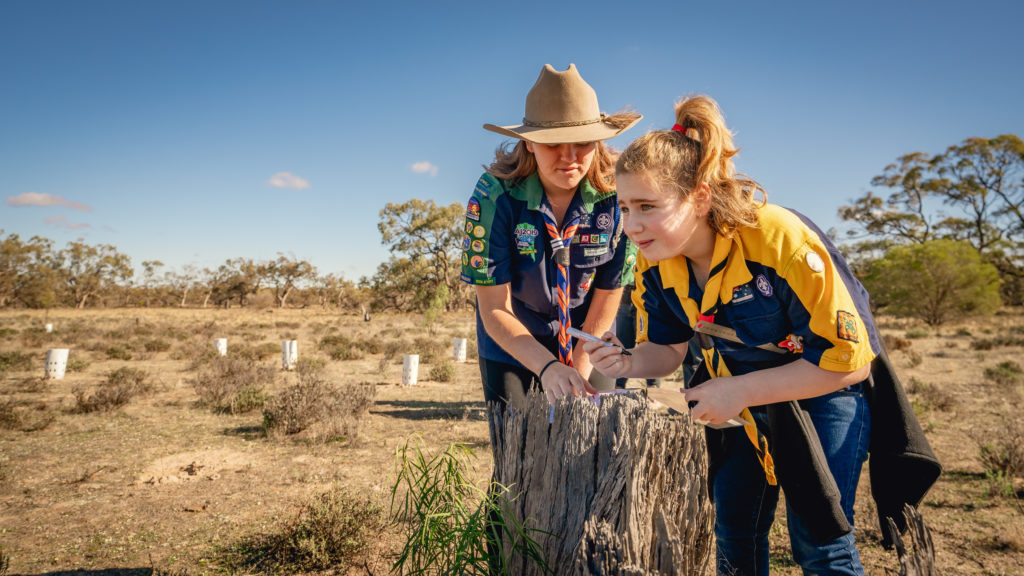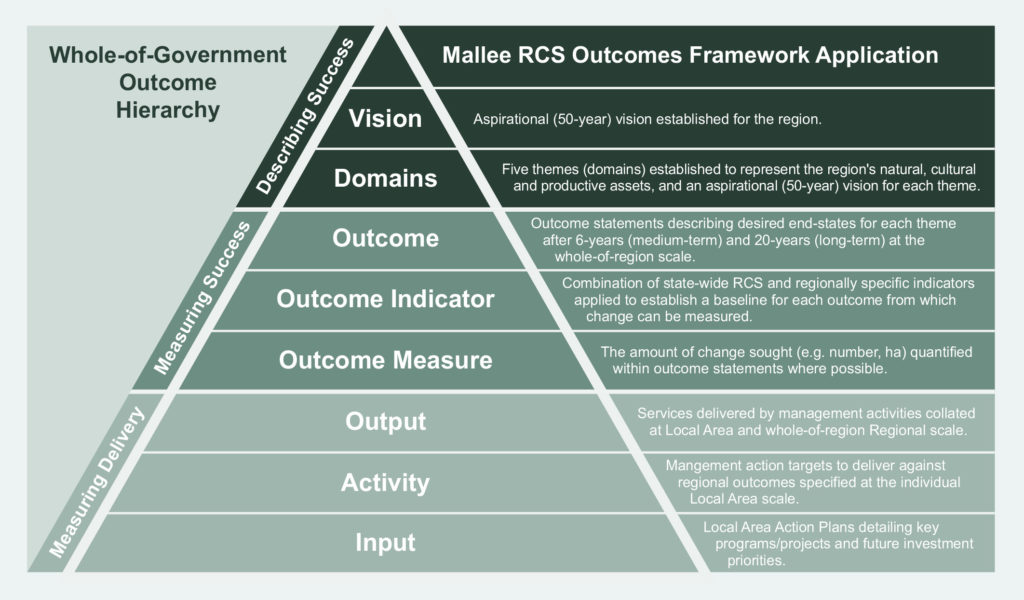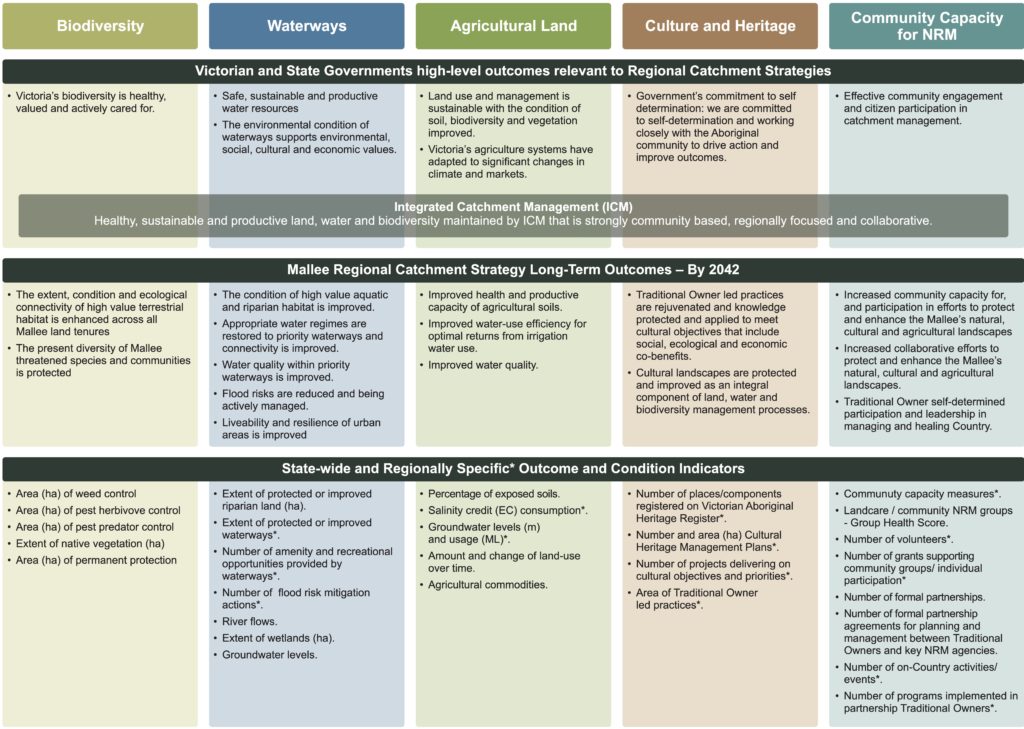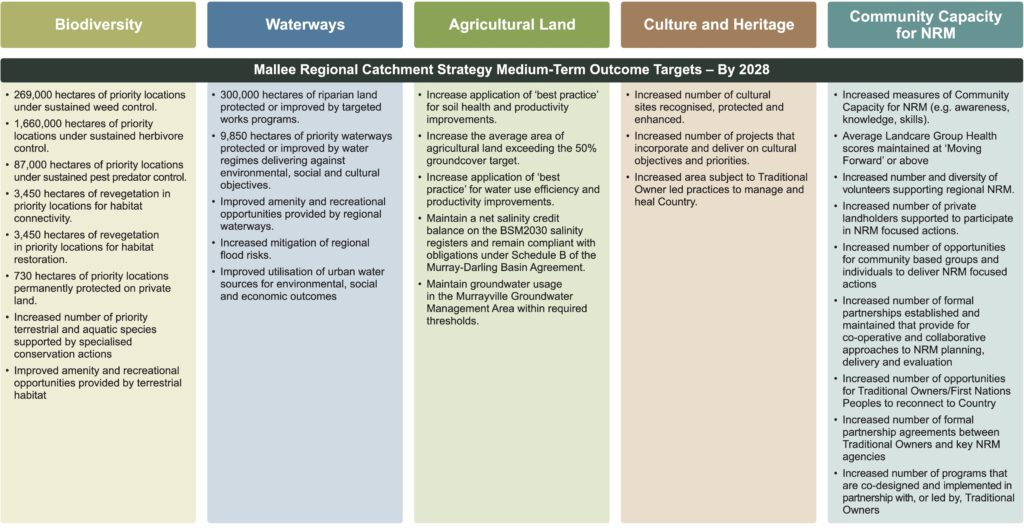A critical component of any strategic instrument such as this RCS is its capacity for adaptive management. That is, can it respond to new information, unexpected outcomes and the uncertainty that is inherent to natural resource management. Ongoing application of a monitoring, evaluation, reporting and improvement (MERI) framework provides the capacity to understand and record the successes (or otherwise) and knowledge that come from RCS implementation.
The primary intention of the MERI Framework is to form the basis to adequately review and report on the RCS at key points throughout its implementation phase. A secondary intention is that it supports all regional stakeholders to incorporate regional achievements into RCS implementation and reporting processes. For this to occur as part of stakeholders’ existing processes, the Framework must provide for a variety of delivery and reporting approaches.
Table 3 outlines the foundational activities required to implement the MERI Framework and associated actions to be delivered over the life of the RCS. Delivery of these actions will be incorporated into wider RCS implementation processes.
A detailed MERI plan will be developed as a supporting document to the RCS (see Figure 9) to allow for the annual review of MERI activities and further support continuous improvement and adaptive management processes.
The RCS MERI Framework will be applied at key intervals; annually, three-yearly (mid-point of RCS implementation) and six-yearly (end-point of RCS implementation).
The CaLP Act requires Mallee CMA to report annually on the management and condition of land and water resources on behalf of the region. This report provides the opportunity to review the scope and scale of the region’s interventions in accordance with expectations, document progress against medium-term (6-year) outcome targets; and present long-term trends in condition. The Management and Condition Report is made publicly available as an attachment to the Mallee CMA’s Annual Report.
The CaLP Act also requires the CMA to undertake a mid-term and full-term review of the RCS, expanding on annual reporting processes by focussing on the overall impact, effectiveness, appropriateness, efficiency and legacy of RCS implementation.
These annual, mid-term and full-term reviews will be prepared with the expectation that they provide information and mechanisms to enhance implementation of this 2022–28 RCS, and inform development of the next RCS.
Factors such as changes in government policy, emerging threats and opportunities, resourcing shifts, and improved knowledge can all influence RCS relevance over its 6-year implementation period. Adaptive management is supported by mid-term review processes which provides for development of an RCS Addendum to consider: key changes, impacts on implementation, and how the region will respond to these changes over the life of the RCS.
As supporting documents to the RCS, Local Area Action Plans will also facilitate adaptive management processes. The Plans will be reviewed annually in consultation with regional stakeholders to ensure currency and inform ongoing investment/delivery priorities.

To provide for greater consistency in how RCS implementation is measured and reported across the state, an RCS Outcomes Framework was established by Victorian CMAs in consultation with DELWP and the VCMC.
The Framework was developed to align with the Department of Premier and Cabinet’s ‘Outcomes Architecture’ hierarchy, released in 2018 as part of the Victorian Government’s public-sector reform agenda. All Government agencies are required to apply this hierarchy and associated guidance material to their legislative reporting processes so as to facilitate consistent approaches, language and measures.
Applying this whole-of-government approach to the RCS enables all CMAs to demonstrate how regional outcomes and management activities deliver against state-wide policies and high-level outcomes at the landscape (i.e. Local Area), regional, and state-wide scale (i.e. aggregation across the ten CMA regions) as appropriate. Figure 12 outlines how the Mallee RCS Outcomes Framework aligns with the Victorian Government’s Outcomes Architecture hierarchy.

The RCS Outcomes Framework specifies a set of condition and outcome indicators aligned with state policy relating to each of the RCS Themes (see Appendix 4). Guidance notes detail the data source and presentation to be applied within the RCS for each indicator. This baseline and long-term trend data is provided, where available, for each indicator within the ‘Condition and Trends’ section of the associated Theme (see Section 3).
Regionally specific indicators have also been utilised throughout the Mallee RCS to ensure progress against all stated outcome targets is effectively measured and reported. While baseline data is available for the majority of these additional indicators, information gaps have been noted within the RCS for addressing through further development of the RCS MERI Framework and associated MERI Plan.
Figure 13 outlines the Mallee RCS Outcomes Framework; incorporating state-wide policy outcomes, regional long- term (20-year) outcome statements, state-wide RCS condition and outcome indicators, regionally specific indicators, and the region’s medium-term (6-year) outcome statements. The six-year management (i.e. activity) targets required to achieve regional outcomes are detailed for each Local Area in Section 4.
The RCS Outcomes Framework is informed by the knowledge and aspirations of regional stakeholders, with several key assumptions applied, specifically that:
- The region’s priority management and strategic directions over the life of the RCS are the right mechanisms with sufficient scope and scale to contribute meaningfully to 20-year outcomes
- There will be sufficient resources available to the region over the life of the RCS to implement its priority management actions with sufficient scope and scale to contribute meaningfully to 6-year outcomes
- There is sufficient information, or access to information, over the life of the RCS that can be meaningfully applied to report on delivery against management targets, progress against outcome targets, and impacts on asset condition
- Externalities such as climate, demographic, and market conditions influence the Mallee over the life of the RCS in accordance with long-term median expectations
- Land managers and other regional stakeholders remain motivated and empowered to act on NRM principles.
Capturing management actions undertaken by all regional delivery partners currently represents a key information gap impacting on the extent to which the Mallee RCS Outcomes Framework can be applied. The different reporting requirements and data collection systems that each organisation operates under limits the extent to which whole-of-region data can be effectively collected and collated. Mallee CMA will continue to work with regional stakeholders and state government departments to identify opportunities for increased consistency in data collection, and improved data sharing processes.




